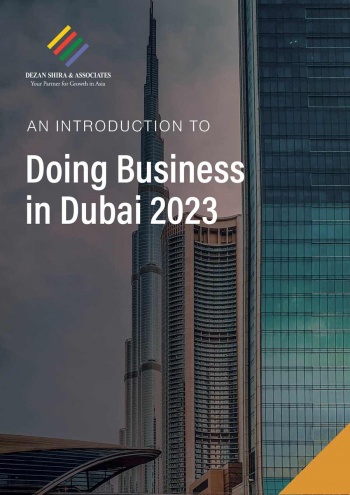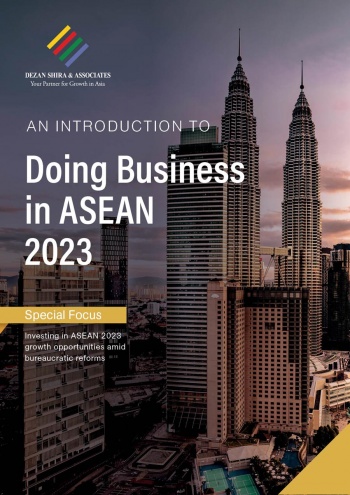Empowering Qatar’s Private Sector: A Roadmap for 2024-2030 Development
By Arendse Huld
Qatar will seek to move from a government-led economy to a private sector-led economy under its new national development strategy.
The Third National Development Plan 2024 – 2030 (NDS3), which was officially unveiled earlier in January, will guide the economy’s development through the last stretch of the Qatar National Vision 2030 (QNV2030), the country’s long-term development plan launched in 2008.
Speaking at the Gulf Economies session at the World Economic Forum (WEF) in Davos on January 16, 2024, Minister of Finance Ali bin Ahmed al-Kuwari endorsed the NDS3, and highlighted the core areas of focus as “economic growth, economic diversification, private sector enablement, and [a] move away from a government-led economy to a private sector-led economy”.
Al Kuwari also emphasized the role of sovereign wealth funds (SWFs) in guiding economic growth and supporting the private sector, stating that “because of the capital availability and the knowhow, […] they can invest and co-invest with the private sector in many important sectors”. In addition, SWFs can also be effective in driving investment to sectors that are not attractive to the private sector, but are important.
Al Kuwari also noted the private sector’s important role in creating jobs and its efficiency, and at the same time emphasized the importance of the government to “take some of the burdens”, signaling a future built on private-public investment and cooperation.
Key goals under the NDS3
Economic diversification
Though Qatar has sustained steady GDP growth since the implementation of the QNV2023 and has overseen significant progress in the country’s industries and society, the country’s economy remains overwhelmingly reliant on the hydrocarbon sector.
Key sectors that have been identified as “diversification clusters” include manufacturing, logistics, IT and digital services, financial services, education, food and agriculture, healthcare, tourism, and education.
Under NDS3, Qatar aims to reach an annual non-hydrocarbon GDP growth of 4 percent. This process is already underway, with the country’s non-hydrocarbon GDP growth expected to outstrip overall GDP growth in 2023.
Fostering the private sector
Fostering private sector growth is the cornerstone of NDS3. A key mechanism for growing the private sector is to optimize the country’s business environment to make it friendlier for both domestic and foreign investors.
Under the NDS3, Qatar will aim to foster a “best-in-class” regulatory environment for FDI attraction, which will involve efforts such as harmonizing economic zones, streamlining the business establishment process, and avoiding redundancy in FDI attraction initiatives, according to a handbook from the Qatari Planning and Statistics Authority (PSA).
The country will also seek to foster competition through concerted liberalization and privatization measures in target industries, enhancing transparency and competition by reforming public procurement policy, and developing In-Country Value (ICV) policies to level the playing field for local companies.
To spur the private sector, the NDS3 also aims to increase private sector access to funding. These may come in the form of:
- Credit facilities for a wide range of companies, with a focus on entrepreneurs and start-ups;
- Risk capital through a national fund-of-funds;
- PPP schemes, which will be revised to facilitate SME participation; and
- Bank credit to SMEs, access to capital markets, and other initiatives achieved through developing the financial services sector.
Under the NDS3, Qatar aims to raise the share of Qataris working in the private sector to 20 percent. According to the PSA, 84 percent of Qataris were employed in the public sector in 2020.
The country will also seek to increase foreign investment, targeting net FDI inflows to reach US$100 billion by 2030. In 2022, Qatar attracted US$29.78 bn in FDI capital expenditure, according to Invest Qatar.
Upskilling the labor market
The NDS3 aims to transform the labor market by focusing on high-skilled jobs and upskilling the Qatari talent pool, supplemented by international high-skilled talent. Key objectives include increasing labor force skills and productivity, boosting Qatari participation in future economic sectors, and cultivating a talent base with improved learning outcomes. The 2030 targets include getting over 18 percent of students graduating in STEM fields and more than 46 percent of the workforce working in skilled and high-skilled jobs.
To achieve workforce upskilling, Qatar plans to reform immigration policies to better attract high-skilled foreign talent. This includes moving toward a skills-based system and implementing new types of visas for entrepreneurs, freelancers, students, and elite talent.
Qatari participation in the private sector will be stimulated through incentives, upskilling programs, and adjustments to the value proposition of higher education. The strategy also involves governance models for education-labor market alignment, including a workforce planning committee.
To develop a more educated and motivated talent base, Qatar aims to revamp the teaching profession, redefine academic oversight for K-12 schools, strengthen behavioral guidance, and enhance early childhood education, among other measures. The strategy emphasizes flexible education pathways, practical learning resources, and the use of generative artificial intelligence in teaching methods.
Improving environmental sustainability
A core part of the NDS3 Qatar is committed to environmental sustainability as outlined in its NSD3. One of the country’s main aims is to reduce greenhouse gas emissions by 25 percent and achieve 4 Gigawatt renewable energy capacity by 2030. It also plans to protect 30 percent of land and sea areas, restore 30 percent of degraded natural habitats, reduce groundwater extraction by 70 percent, and limit per capita water consumption to under 310 liters per capita per day.
The strategy also outlines several climate mitigation measures, including carbon capture, renewable energy adoption, and efficiency measures in key sectors. Water conservation efforts include sustainable desalination, leak detection, and reducing household consumption. Qatar has also committed to developing the circular economy by integrating circular principles into industrial processes, fostering a market for recycled materials, and reducing waste through programs to change behavior and habits.





